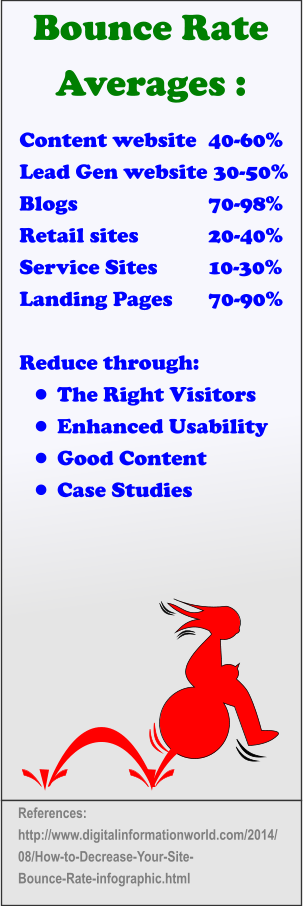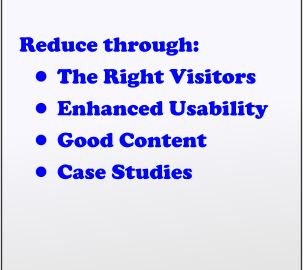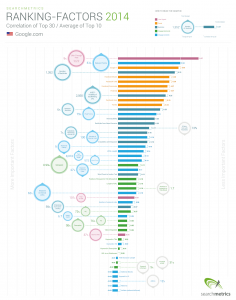With the changes to Google’s ranking algorithms (Panda, Penguin, Hummingbird, Pigeon) and the information available in Google Analytics it’s an obvious question “What is the continuing relevance of Google Analytics to SEO?”
Well, as it happens, there are good reasons to want to look at Google Analytics to give you ideas as to what you need to do to improve your search engine optimisation. Whilst you no longer have access to many of the raw keywords and phrases used to reach your website you still have feedback on how you’re doing and therefore how you might improve. In fact, that’s the core reason for wanting to look at analytics in any circumstance.

Bounce Rate in Context
In 2015 SEO practitioners are stressing the extent to which time on site bounce rate and. the pages per session seem to be important factors that influence Google in its ranking choices. All of these can be seen in Google Analytics reports for the various pages on your website. So you can get a good idea as to how long those who come to your website are staying.
A really good infographic on pinterest & digitalinformationworld.com drew attention to the extent to which bounce rate should be thought of in context. I’ve pulled outsome of the key points and put them in the image that you’ll see next to this article.
So there is no ideal bounce rate for a website; it depends what kind of website you’re running. You’ll see that service sites are typically very low 10% to 30% on average; while blogs are pretty high. 70% to almost 100%. Let’s step back and have a think about why this might be.
A website where somebody goes to look for a service is likely to have lots of information across a range of pages. And as soon as more than one page is involved. Google’s bounce rate is by definition zero. So if you have this kind of site, it’s natural to expect visitors to come and look at the number of pages. This doesn’t mean they go away satisfied, it just means that the bounce right statistic suggests they liked your site.
By contrast, a blog will have a number of articles and people are often coming from somewhere else to read a specific single article. So unless you’re lucky and something else on the blog grabs their attention, they’ll.only read that one article. So it would be nice to look at the time on the page. Sadly, unless you’ve done something clever Google will not be able to tell you that. So you might have good numbers of visitors who like your content, and read your articles but they only ever read one at a time. So looking at bounce rate in isolation the site may look bad.
It’s the same for landing pages 70-90%. I confess I’m puzzled why lead gen has supposedly got a so much lower average bounce rate than landing pages. After all the generation typically relies on landing pages. The reason bounce right on the landing page can be high is fairly obvious. Visitors are typically arriving in response to a specific offer. If 2/10 say yes and the other 8/10 say no you have an 80% bounce rate.
Having said all this infographic went on to point out that there are a number of ways of reducing bounce rate. And all other suggestions are good. A bit like motherhood and apple pie. If you had the opportunity to do any and all of them on any web page then you should.
What do you think? Do you agree with the ranges given?
(197)





